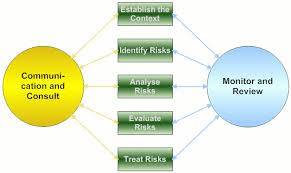Risk Assessment Workflow
Risk Assessment Workflow
Term Definition of Risk Assessment Workflow Risk assessment workflow is the process of identifying potential risks, quantifying the probability of occurrence and assessing their likely impact upon the project. All projects carry risk. Protecting project value involves dealing with the uncertainty that is associated with project delivery. Project Managers help to turn uncertain events and […]
Term Definition of Risk Assessment Workflow
Risk assessment workflow is the process of identifying potential risks, quantifying the probability of occurrence and assessing their likely impact upon the project. All projects carry risk. Protecting project value involves dealing with the uncertainty that is associated with project delivery. Project Managers help to turn uncertain events and efforts into certain outcomes and deliverables. Thus one of the primary processes associated with project management is project risk management as well as risk assessment workflow.
Project planning must include risk planning. In identifying potential risks, you can then take steps to mitigate the risk, avoid the risk or eliminate it. Project risk management gives you the confidence to know what to do if the risk occurs and what the impact on the project will be.
 Risk Assessment Workflow and Risk Determination
Risk Assessment Workflow and Risk Determination
When determining risk assessment workflow, you must consider the event causing the risk, the probability of the risk occurring and the impact on the project plan if the event occurs. Take the following risk assessment example, if a project has an information component to it and there is pending regulation involving information privacy, there is a risk that the regulation can impact the project.
It is impossible to determine every risk even that could potentially occur. Thus, the focus is only the events that are most likely to occur. Once a risk event has been identified, the next is to determine the impact it would have on your project. This includes determining the effect upon the project scope, time, resources or quality aspects of your project plan. The impact can be ranked from high to low or stratified by some other method.
There are several generic responses to risk including (risk assessment checklist): reduce the risk, eliminate the risk, accept the risk, avoid the risk or transfer the risk. The response to risk will be a strategic decision, which will depend upon the organizations risk profile, the strategic goals and involve project stakeholders.
In summary, project risk assessment workflow management relies on two key aspects: determining the risk and designing risk response.
